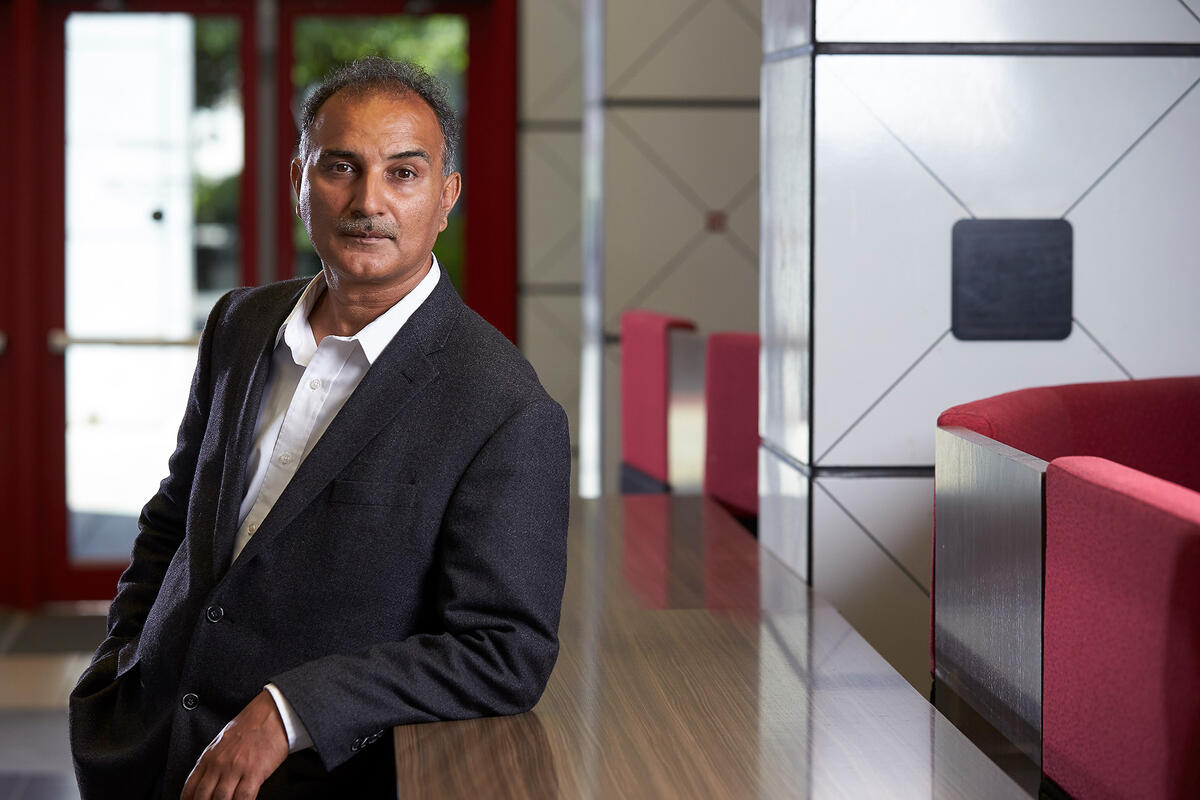Neeraj Bhandari joined the UNLV School of Community Health Sciences last year after making a big career shift — from practicing doctor in India to a Ph.D. student in Pennsylvania. Now he’s helping make health care more transparent and accessible.
What brought you to UNLV?
I was looking into public health and health care administration programs upon completing my Ph.D. at Penn State, but I mainly just had a research portfolio and I put it out there. I was interested in the kind of freedom for research that I found here, ultimately. I wanted to pursue research, while also teaching, but mainly focus on the former.
What is your main area of research?
I mostly work with quality report cards — how you systematically capture the quality differentials among providers, hospitals, doctors, or any health care personnel. Not just the capturing of this data for scientifically valid metrics, but also to be able to disclose them to the public — people make choices about doctors and health care needs all the time. This is called provider quality transparency.
My work deals with whether people actually use these quality report cards to any significant extent. Many people seem skeptical about these — usually just asking their friends or their primary doctor, when it comes to a specialist. The big idea is how you move people from that perspective to using quality report cards more frequently. My work has found that in most cases, very few people are using these.
People happily use services similar to quality report cards for things like finding a restaurant, barber, car, or even a date. Why not health care?
For one, for something as consequential as a doctor, you need a high level of trust. People trust their current doctors and family. Also, there isn’t just one source for this information. For example, people trust the FDA (U.S. Food and Drug Administration) because they are the gold standard. There’s just one agency and they’re trusted to do the right thing. With provider report cards, every organization has its own metrics. How do you choose when 10 different sources have 10 different conclusions?
What put you on the path to your research?
I started at Penn State in 2010, but prior to starting on the academic track, I was actually working as a resident physician in a critical care unit in a New Delhi (India) hospital. I came there from working in the government sector, running a clinic in a rural area where we were responsible for all the outpatient, preventive care, vaccinations, family health, and other health services for several surrounding villages.
When you're not working, what do you do in your spare time?
I'm an avid reader of books — my interests have been in political philosophy, ethics, epistemology — the philosophy of how human beings use their brains to see the world and the philosophy of science. Philosophy in general, really. In some ways I’m even more interested in these issues than in what I'm doing right here. It's a hobby but it's also a passion.
I’m very interested in music. Most of the music I have and enjoy is Indian music from the 60s and 50s, old Indian Hindi movie music. I also enjoy classical music, but I’m not as much into rock or pop music.
Tell us about a time you’ve been daring.
I suppose the daring part has always been making decisions that go against the collective wisdom of everyone around you. When you make those decisions, not only are they difficult in their own regard, it becomes more difficult when people around you and the community are critical about those decisions.
For instance, my transition from doctor to researcher, at a time when I'd spent already more than a dozen years in the field and was already established. I was doing work I loved, but I wanted to go to something I loved even more. I was at a point in life when most people are looking for stability, so it was a tough decision and not something most people recommended — so I had to work against that.
There's a certain amount of daring in ultimately remaining true to your principles, even in the face of that kind of opposition.
What about UNLV is different from the other places you’ve worked?
Well, I've just had experience with just the two universities here in the United States. The weather is different, to say the least! I got used to the heavy snow and huge disruption in the winter. I hadn’t even seen snow until I came to America. And then, within a few hours I learned to tune it out.
The heat here reminds me of my time in India, where we have temperatures in excess of 110, but it was much more humid. I do miss the trees — although this side of campus is almost like an island in Las Vegas, and they put a huge amount of effort into keeping it in shape.
The education system in India is also so different. The standards of teaching and review are much higher here than they are in schools and colleges in India. The teaching is more interactive with students being more active in disciplines. The materials are more focused on real world details. In India it's more like rote teaching.



